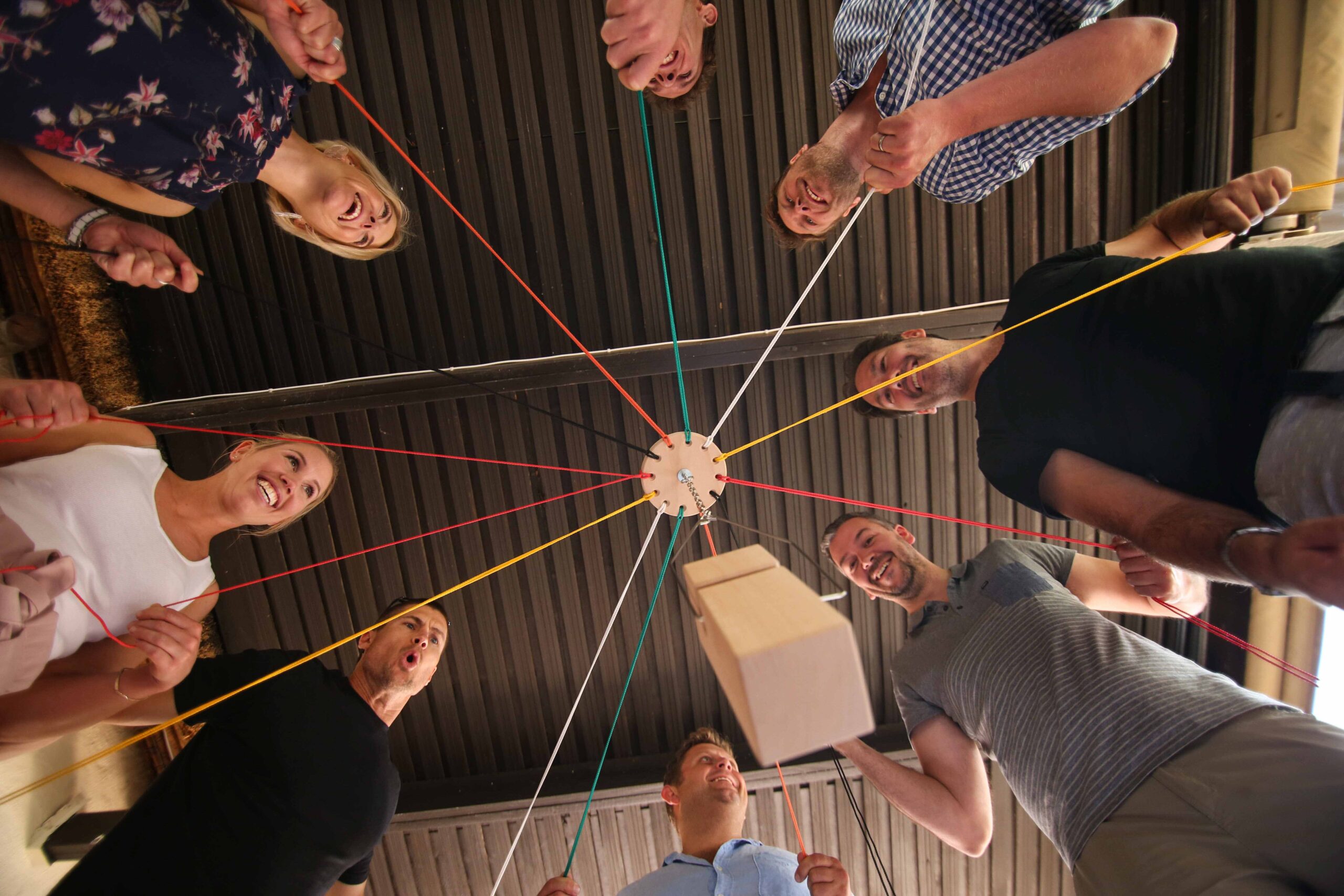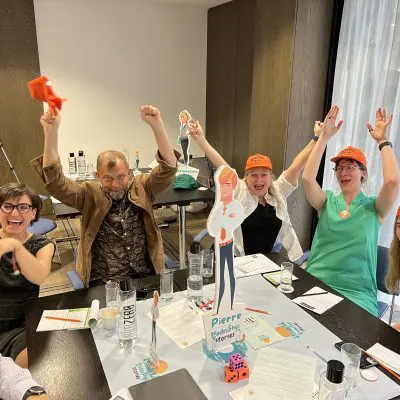I’ve been in countless meeting rooms where you could feel the tension. You know the kind—where everyone stares down at their notepads instead of speaking up, where great ideas die before they even hit the air. That’s the absence of psychological safety at work.
When people don’t feel safe to ask questions, take risks, or admit mistakes, the whole team suffers. Innovation slows, collaboration breaks down, and employees start disengaging. On the flip side, when a workplace feels open, supportive, and forgiving, everything changes. People feel free to bring their best ideas forward. They trust one another. They actually enjoy coming to work.
That’s why creating psychological safety in the workplace isn’t just a “nice-to-have.” It’s a fundamental building block of a successful organization. And in a world where hybrid teams, constant change, and AI-driven workflows are the norm, it matters more than ever.
In this article, I’ll unpack what psychological safety really is, why it’s crucial for your business, and how to create psychological safety in the workplace step by step. Along the way, I’ll share some real-world stories, highlight insights from experts in the field, and point you toward resources that can help you start building a more resilient, connected team.
What Is Psychological Safety in the Workplace?
Let’s clear up a big misconception right away: psychological safety isn’t about being “nice” all the time or avoiding conflict.
So, what is psychological safety in the workplace? It’s the shared belief among team members that they won’t be humiliated, punished, or rejected for speaking up, sharing ideas, asking questions, or even failing.
That might sound similar to trust, but there’s an important difference. Trust is about your confidence in others: believing they’ll do what they say they’ll do. Psychological safety, on the other hand, is about your confidence in the group’s response to you. Do you feel safe to be yourself, to admit you don’t know something, to offer a half-baked idea without being shot down?
Harvard professor Amy Edmondson, who pioneered the research on this concept, put it simply: psychological safety means “a climate in which people are comfortable being (and expressing) themselves.”
In practice, that looks like:
- A new hire asking “basic” questions without fear of being judged.
- A manager admitting they don’t have all the answers.
- A team member pitching a wild idea in a brainstorming session—and sparking innovation because of it.
Constance Dierickx, “The Decision Doctor,” put it perfectly when she joined us on the Team Building Saves the World podcast: “You can’t expect people to exhibit courageous behavior if you’re going to punish them for making mistakes.”
Exactly. Courage dies in environments where people are afraid of being embarrassed or blamed. But in a psychologically safe workplace, courage is contagious.
Why Psychological Safety at Work Matters
Psychological safety isn’t just a feel-good concept. It has measurable impact. A report from Accenture found that employees who feel psychologically safe are:
- 50% more productive
- 76% more engaged
- 57% more likely to collaborate
- 76% less stressed
And perhaps most telling: workplaces with high psychological safety had 27% less turnover.
Those numbers are striking, but they mirror what I’ve seen in real teams. When people feel emotionally safe at work, they stop wasting energy on self-protection. Instead, they invest that energy into solving problems, supporting colleagues, and bringing their best ideas forward.

Signs of a Psychologically Safe Workplace
So how do you know if your team already has psychological safety? Look for these signs:
1. Strong Communication
Employees are comfortable speaking up and not just during formal meetings but in everyday conversations. You’ll hear people bouncing ideas off each other, asking clarifying questions, and even laughing together.
2. Constructive Feedback
Feedback is frequent, candid, and useful. People know they can share constructive criticism without it being taken personally. Just as importantly, they know they can receive feedback without shame.
3. High Morale
A team that feels emotionally safe tends to have higher morale. People are more engaged, less burnt out, and more willing to invest discretionary effort.
4. Courageous Leadership
Leaders model the behavior they want to see. They admit mistakes, listen deeply, and encourage curiosity. As Constance Dierickx noted: “A courageous leader understands that if you don’t create an environment for people to be courageous, they won’t be.”
That’s the heart of a psychologically safe workplace and it starts at the top.
How to Create Psychological Safety in the Workplace
Now to the big question: how do you create psychological safety in the workplace? Changing culture isn’t easy, but it’s possible if you commit to it intentionally.
Here are five practical steps I recommend:
1. Lead by Example
Culture shifts start at the top. If you’re a leader, show your team it’s okay to be vulnerable. Admit when you don’t have the answer. Share what you’ve learned from mistakes. Ask for feedback — and then act on it.
When leaders model openness, employees feel permission to do the same.
2. Build Emotional Intelligence in Teams
Psychological safety in teams requires self-awareness and empathy. That’s where emotional intelligence comes in. When team members can recognize their own triggers and understand the emotions of others, collaboration gets easier.
This is where I often run interactive sessions that focus on skills like active listening, empathy, and regulation under stress. Those are the muscles that support emotional safety at work.
3. Encourage Risk-Taking Without Punishment
Reward initiative, even when results aren’t perfect. Instead of asking, “What went wrong?” ask, “What can we learn from this?”
This reframing shifts mistakes from being career-threatening to being growth opportunities — and that’s when real innovation happens.
4. Normalize Feedback as a Two-Way Street
Feedback shouldn’t just flow from the top down. Encourage peer-to-peer feedback, and don’t shy away from asking your team, “What could I be doing differently as your leader?”
Cindy Wahler, leadership strategist and guest on our Courageous Leadership Drives Success podcast, highlighted this perfectly: “Leadership isn’t about power, it’s about creating conditions where people can succeed.”
Feedback is one of those conditions.
5. Create Rituals That Reinforce Safety
Consider adding regular check-ins where employees can share wins, concerns, or even frustrations without judgment. Team building activities are also great for reinforcing these dynamics.
For example, programs like our Integrity activity are designed to help teams practice communication, empathy, and collaboration: all pillars of a psychologically safe workplace.

Common Obstacles (and How to Overcome Them)
Of course, creating psychological safety isn’t without its challenges. Here are some common obstacles I see and how to address them:
- Toxic culture: If blame, bullying, or fear dominate, you’ll need to reset the tone. Start small, model new behaviors, and hold everyone accountable.
- Fear and lack of trust: Consistency is key. Follow through on promises. Celebrate risks, even if they don’t work out. Build a track record of psychological safety.
- Poor communication: Overcommunicate rather than under-communicate. Set clear expectations, invite input, and make sure every voice is heard.
These hurdles are real, but they’re not insurmountable.
Difficult Conversations as a Testing Ground
One of the most vulnerable points for teams is during difficult conversations. This is where psychological safety either shows up or breaks down. In our Difficult Conversations episode of Team Building Saves the World, communication expert Aden Nepom shared a piece of wisdom that I keep coming back to:
“The step that’s so important that everyone wants to skip is knowing why you’re having the conversation in the first place. If you aren’t super crystal clear on that purpose, you’re just going to escalate or spin your wheels.”
That insight is pure gold. When leaders are clear on intent (not just reacting or lecturing) they show respect, reduce fear, and model the kind of openness that keeps psychological safety in teams intact. Pairing this with emotional intelligence skills like empathy and active listening transforms what could be stressful moments into opportunities for connection.
Emotional Intelligence and Psychological Safety Go Hand in Hand
You really can’t talk about psychological safety at work without also talking about emotional intelligence. It’s the toolkit that makes safety possible in the first place. Emotional intelligence is what helps leaders notice when a conversation is going off track, stay calm under pressure, and respond in a way that keeps people engaged instead of shutting them down. Without those skills, even the best efforts at creating psychological safety in the workplace can fall flat.
Think about it. If a manager isn’t self-aware enough to notice when they’re shutting people down, or lacks empathy to see how their words land, even the best-intentioned efforts at creating psychological safety in the workplace can fail. On the flip side, emotionally intelligent leaders can stay calm in heated moments, really listen, and guide teams through challenges without eroding trust.
If you want to dive deeper, we unpack this more in our piece on Emotional Intelligence in the Workplace. The short version? High-EI leaders create safe spaces where employees feel heard, valued, and free to take risks, which is exactly what psychological safety demands.
Building Psychological Safety Through Team Building
One of the best ways to accelerate psychological safety is through intentional team experiences. Team building helps people practice trust, collaboration, and vulnerability in a low-stakes environment.
When done right, those skills transfer directly back to the workplace. That’s why we designed events like Emotional Intelligence for Teams—to give people not just theory, but practice in creating a psychologically safe workplace. These experiences act like mini-labs for practicing psychological safety. When the real moments come, teams already have the muscle memory.
Final Thoughts: The Future of Psychological Safety at Work
We’re heading into an era where hybrid teams, AI-driven change, and constant disruption are the norm. In this environment, psychological safety at work may be the most valuable asset you have.
Because when people feel safe to speak up, take risks, and be themselves, they don’t just perform better and they transform together.
So, the question isn’t whether to prioritize psychological safety, but how soon you’re willing to start.
If you’re ready, TeamBonding has programs and events that can help you take the first step. Let’s build not just smarter teams, but safer, braver ones too.













